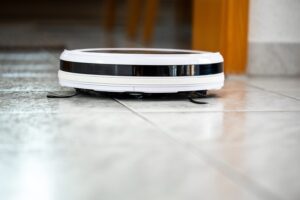Are you tired of constantly replacing your robot mop pads? Wondering how long they should really last? In this comprehensive blog post, we will delve into the world of robot mop pads and explore everything you need to know about their lifespan. We’ll answer burning questions such as: What factors affect the longevity of robot mop pads? How can you extend the life of your robot mop pads? And, most importantly, how long can you expect your robot mop pads to last under normal usage?
We’ll discuss the different types of robot mop pads available in the market, the materials they are made of, and how these factors impact their durability. Additionally, we’ll provide practical tips on maintenance and care to ensure that your robot mop pads reach their maximum lifespan. Whether you’re a new robot mop owner or a seasoned user looking to optimize the longevity of your mop pads, this blog post will equip you with the knowledge to make informed decisions and get the most out of your investment.
Understanding the Lifespan of Robot Mop Pads
Robot mop pads are essential components of automated cleaning systems, but their longevity can vary significantly based on several factors. Understanding the average lifespan of these pads, as well as the variables that influence their durability, is crucial for users looking to maximize their investment in robot mop technology. In this blog post, we’ll delve into the factors that affect the lifespan of robot mop pads, provide tips for extending their longevity, and offer insights into when and how often you may need to replace them. We aim to equip readers with the knowledge to make informed decisions and get the most out of their investment in robot mop pads.
Factors Affecting the Longevity of Robot Mop Pads
Robot mop pads, like any other cleaning tool, are subject to wear and tear over time. The type of flooring in your home can significantly impact the lifespan of your robot mop pads. Hard, abrasive surfaces such as stone or tile can cause more friction and wear on the pads compared to smoother surfaces like hardwood or laminate. Additionally, the frequency and intensity of use will influence how long your robot mop pads last. Heavy usage on a daily basis will naturally wear out the pads more quickly than lighter, occasional use.
Tips for Extending the Lifespan of Your Robot Mop Pads
Regular Cleaning: After each use, remove the mop pad and wash it according to the manufacturer’s instructions to prevent dirt and grime buildup.
Proper Storage: Store your robot mop pads in a clean, dry area to prevent mold, mildew, or bacterial growth that can deteriorate the fabric over time.
Gentle Handling: Avoid using harsh chemicals or bleach when cleaning the mop pads as these can weaken the fabric and reduce its lifespan.
Inspect for Damage: Periodically check the mop pads for any signs of wear and tear such as fraying edges or thinning fabric, and replace them as needed.
Rotate Pads: If your robot mop comes with multiple pads, rotate their usage to distribute wear evenly and extend the overall lifespan of the pads.
Avoid Overuse: Using the robot mop excessively can lead to premature wear and tear, so use it according to the recommended frequency for optimal lifespan.
Proper Installation: Ensure that the mop pads are properly attached to the robot mop to prevent them from slipping or getting damaged during operation.
Regular Maintenance: Keep your robot mop in good working condition by following the manufacturer’s maintenance guidelines, which can indirectly contribute to the longevity of the mop pads.
Maximizing the Value: Getting the Most Out of Your Robot Mop Pads
When using your robot mop pads, consider the type of flooring in your home; different materials may wear out the pads at varying rates. To extend the lifespan of your robot mop pads, avoid using them on rough or uneven surfaces that could cause premature wear and tear.
Additionally, be mindful of the frequency of use; excessive use can lead to faster deterioration of the pads. Proper storage is crucial; ensure that the mop pads are stored in a clean and dry environment to prevent mold, mildew, or unpleasant odors from developing.
Gentle handling is essential; avoid aggressive scrubbing or wringing out the pads, as this can cause damage and reduce their effectiveness. Regular maintenance, such as cleaning the pads after each use and replacing them when they show signs of wear, can significantly prolong their lifespan. Consider investing in high-quality, durable mop pads to ensure longevity and optimal performance.
Implementing these tips will not only extend the lifespan of your robot mop pads but also maximize their value, saving you money in the long run. Regularly inspect the pads for any signs of damage or wear and replace them as needed to maintain the efficiency of your robot mop.
The Bottom Line: Making the Most of Your Robot Mop Pads
Investing in high-quality robot mop pads can significantly extend their lifespan and maximize their value. By choosing durable, well-constructed pads, you can ensure that they withstand regular use and deliver consistent cleaning performance.
Additionally, adopting a proactive approach to maintenance, such as regular cleaning and proper storage, can help prolong the life of your robot mop pads. Taking care to follow manufacturer guidelines and using the pads in accordance with their intended purpose can also contribute to their longevity and effectiveness.

